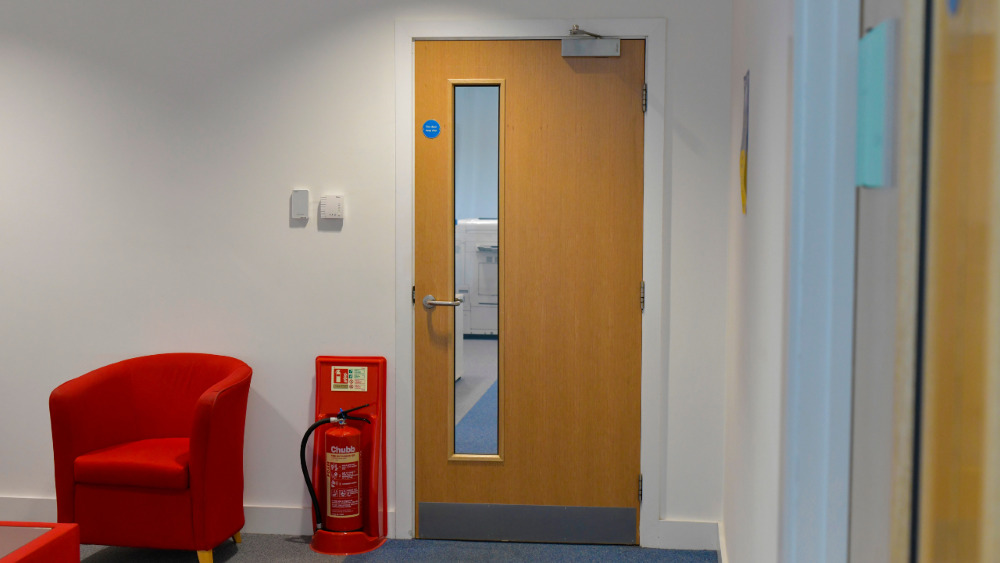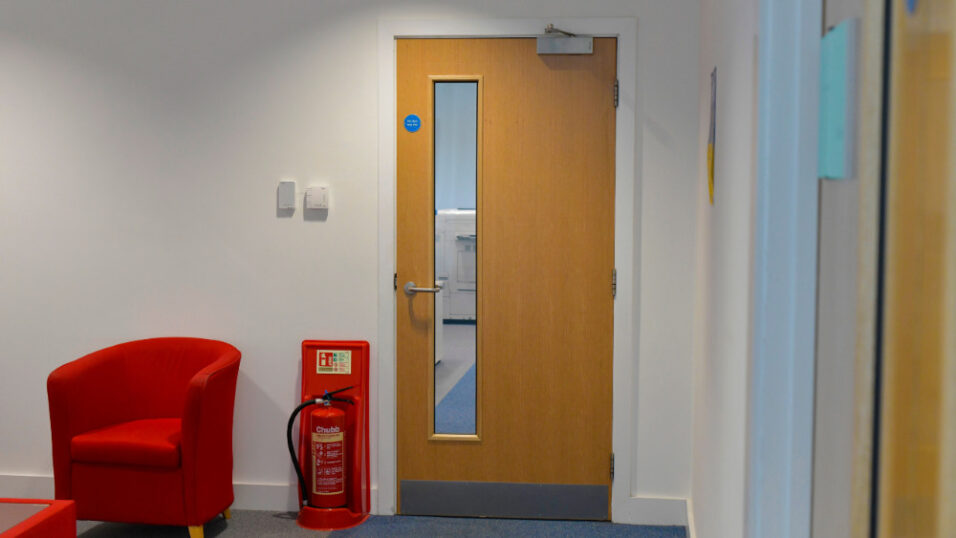



Fire door legislation – is your knowledge up to date?
By Chubb | 27th September 2023
Keeping up to date with relevant building legislation is something we pride ourselves on at Chubb, and with this week marking Fire Door Safety Week (25-29 September) our focus is on recent changes to fire door legislation.
Checking and inspecting fire doors is an integral part of Chubb’s portfolio of fire safety solutions designed to prevent, detect, and contain fires while enabling people time to safely evacuate.
Fire safety legislation for England and Wales, Scotland and Northern Ireland highlights the legal responsibilities of reducing the risk of fire spreading within a premises.
Fire doors play an important part in reducing this risk in many buildings. Penalties for failing to comply with the legislation carry unlimited fines or a prison sentence for organisations and landlords.
What is Fire Door Safety Week?
Fire Door Safety Week aims to raise awareness of the critical role that fire doors play in saving lives and protecting property in the unfortunate event of a fire. Organised by the British Woodworking Federation, it was launched in 2013 to increase public understanding of the vital role that fire doors play in protecting people and property.
What are the changes to fire door legislation?
The Fire Safety (England) Regulations 2022 introduces new duties under the Fire Safety Order for building owners or managers (‘responsible persons’).
From 23 January 2023, responsible persons for all multi-occupied residential buildings in England with storeys over 11m in height must: undertake quarterly checks of all fire doors in the common areas and undertake – on a ‘best endeavour’ basis – annual checks of all flat entrance doors that lead onto a building’s common areas.
The regulations also require responsible persons to provide to residents of all multi-occupied residential buildings with two or more sets of domestic premises, that have common parts, information on the importance of fire doors to a building’s fire safety.
What is a ‘responsible person’?
Building owners must appoint a ‘responsible person’ to ensure that fire safety measures are adequate and that the building is managed in accordance with fire safety regulations.
The concept of a ‘responsible person’ is not new. It was introduced as part of the Regulatory Reform (Fire Safety) Order 2005, which governs daily fire safety. In the context of the new regulations, the ‘responsible person’ is the person who is accountable for the safety of themselves and others who use regulated premises.
Why were the changes brought in?
The changes came in after the Grenfell Tower inquiry noted that: ‘Fire doors play an essential role in preventing or inhibiting the spread of smoke and toxic gases and in preserving the effective compartmentation of buildings.’ The inquiry found that the fire doors in Grenfell Tower did not, through damage and/or disrepair, act in the way that they should to prevent smoke and gases from spreading. The inquiry recommended that the owner and manager of every residential building containing separate dwellings carry out an urgent inspection of all fire doors to ensure compliance with current legislative standards and that regular (no less than every three months) checks be carried out to ensure all fire doors are fitted with an effective self-closing device which is in working order.
In addition, the inquiry recommended that all those who have responsibility for the condition of the entrance doors to individual flats in high-rise residential buildings with unsafe cladding be required by law to ensure these doors comply with current standards.
Prior to the Fire Safety Act 2021, flat entrance doors in multi-occupied residential buildings may not have been routinely considered as part of the fire risk assessment process. The Fire Safety Act 2021 has removed the legal ambiguity and confirms that flat entrance doors are in scope of the Fire Safety Order.
The regulations require responsible persons to undertake best endeavour annual checks of flat entrance doors and quarterly checks of communal doors in multi-occupied residential buildings above 11m.
Information on the importance of fire doors to a building’s fire safety will help to deepen residents’ understanding of their role in keeping their building safe and encourage them to allow responsible persons access to check their flat entrance doors.
Checks of fire doors in buildings below 11m?
The checks required under the regulations do not replace the existing duty under the Fire Safety Order for the responsible person to put in place general fire precautions and their duties under Article 17 of the Fire Safety Order in all buildings which are in scope of the Fire Safety Order, regardless of height.
What are ‘best endeavours’?
It will be for responsible persons to determine the best approach to engage with residents to get access to undertake the annual checks of flat entrance doors. This could include the responsible person agreeing with residents a date, so access can be granted.
What is the importance of regular inspections?
Fire doors are crucial in preventing the spread of fire and smoke in buildings. The Fire Safety Act 2021 clarified that flat entrance doors must be considered in the Fire Risk Assessment mandated by the Fire Safety Order. The Fire Safety (England) Regulations 2022 require regular checks to ensure that self-closing devices are working and the fire doors, including flat entrance doors, are in efficient working order and in good repair. These checks are to ensure that the existing door standard is maintained.
For further information about our fire safety solutions, click here.
